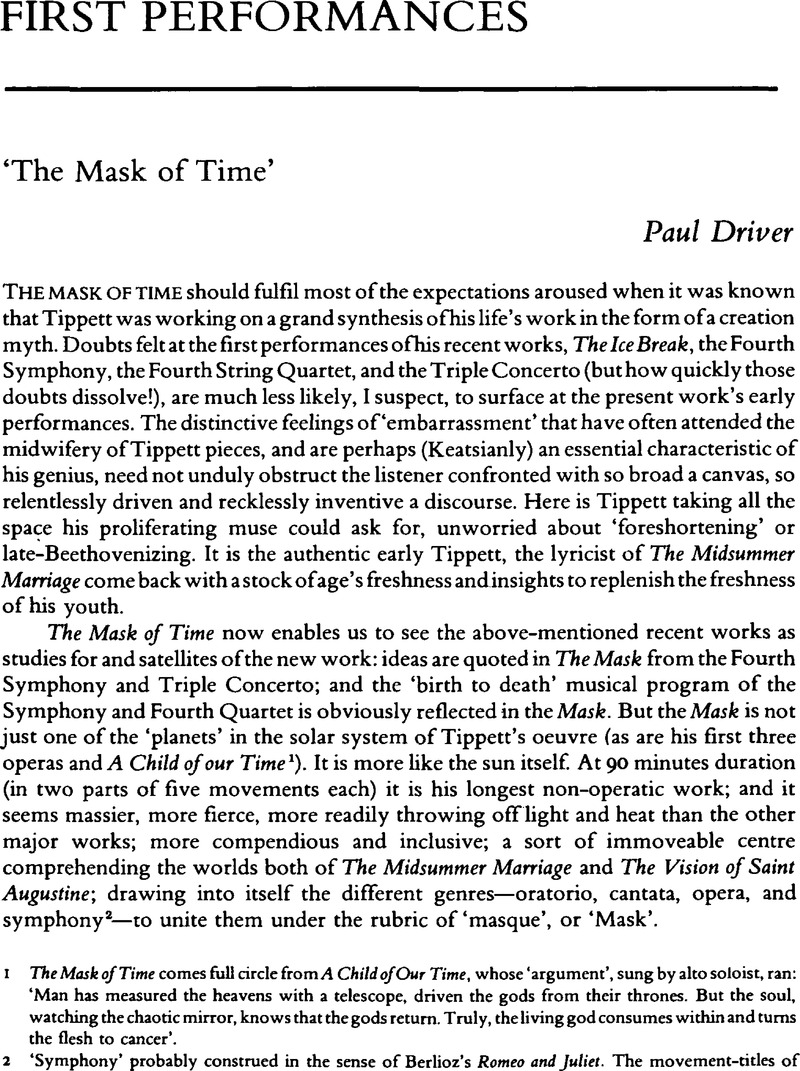No CrossRef data available.
Article contents
First Performances
Published online by Cambridge University Press: 04 February 2010
Abstract

- Type
- First Performances
- Information
- Copyright
- Copyright © Cambridge University Press 1984
References
1 The mask of time comes full circle from A Child of Our Time, whose ‘argument’, sung by alto soloist, ran: ‘Man has measured the heavens with a telescope, driven the gods from their thrones. But the soul, watching the chaotic mirror, knows that the gods return. Truly, the living god consumes within and turns the flesh to cancer’.
2 ‘Symphony’ probably construed in the sense of Berlioz's Romeo and Juliet. The movement-titles of Mahler's Third Symphony (which Tippett auegedly has never heard) were the inspiration for his own chapter-headings.
3 Andrew Porter has suggested (New Yorker, 23 04 1984Google Scholar), as a ‘partial analogue’, Henze's Giordano Bruno setting Novae de Infinito Laudes of 1963.Google Scholar
4 Also, the egg from which the Newly Born hatches in ‘As Far As Thought Can Reach’ suggested the plaster encasement of Yuri in the last scenes of The Ice Break. Cf. Tippett's little article in Shaw Review, Vol. XXI No. 2, 05 1978.Google Scholar
5 Who is Malachi? Vide Richard J. Fenneran's new edition of Yeats's complete poems (Macmillan, New York, 1983). Malachi (‘my messenger’): supposed author of the last book of the Old Testament; Irish saint (1095–1148) known for his reforms; Joyce's nickname for Buck Mulligan (Yeats's friend Oliver St. John Gogarty) in Ulysses.
6 David Cairns likened the ‘sound’ motif to ‘a pair of cosmic billows’. (Sunday Times, 8 04 1984).Google Scholar
7 Cf. The second chorale prelude in [Tippett's] ‘Mirror of Whitening Light’.
8 Commissioned by the Boston Symphony Orchestra for its centennial of 1981, The Mask of Time received its world première in Boston on 5 April.
* Peter Maxwell Davies and Stephen Pruslin: introductory talk before the première.


